Abstract
It has been suggested that mosquito vectors of filariasis and other diseases might be controlled by genetic methods. This is not yet possible because of the lack of genetic information concerning the vector species. The present study describes the development of a marker strain which is being used to study genetic control.
Two spontaneous mutants of Culex pipiens are described, one for the first time. Ruby-eye (ru) is an autosomal recessive in linkage group 2. It is completely penetrant and completely expressed. It is evident in later instar larvae, pupae, and adults. Yellow-larva (y) is an autosomal recessive, sometimes behaving as a partial dominant, and is also in linkage group 2. It is evident in late fourth-instar larvae and pupae and is generally associated with lengthened larval development. Ruby-eye and yellow-larva are occasionally seen in collections from the field. The frequency of crossing over between ru and y differs significantly among progenies and also between the sexes, the median values being 17% in males and 24% in females.
Full text
PDF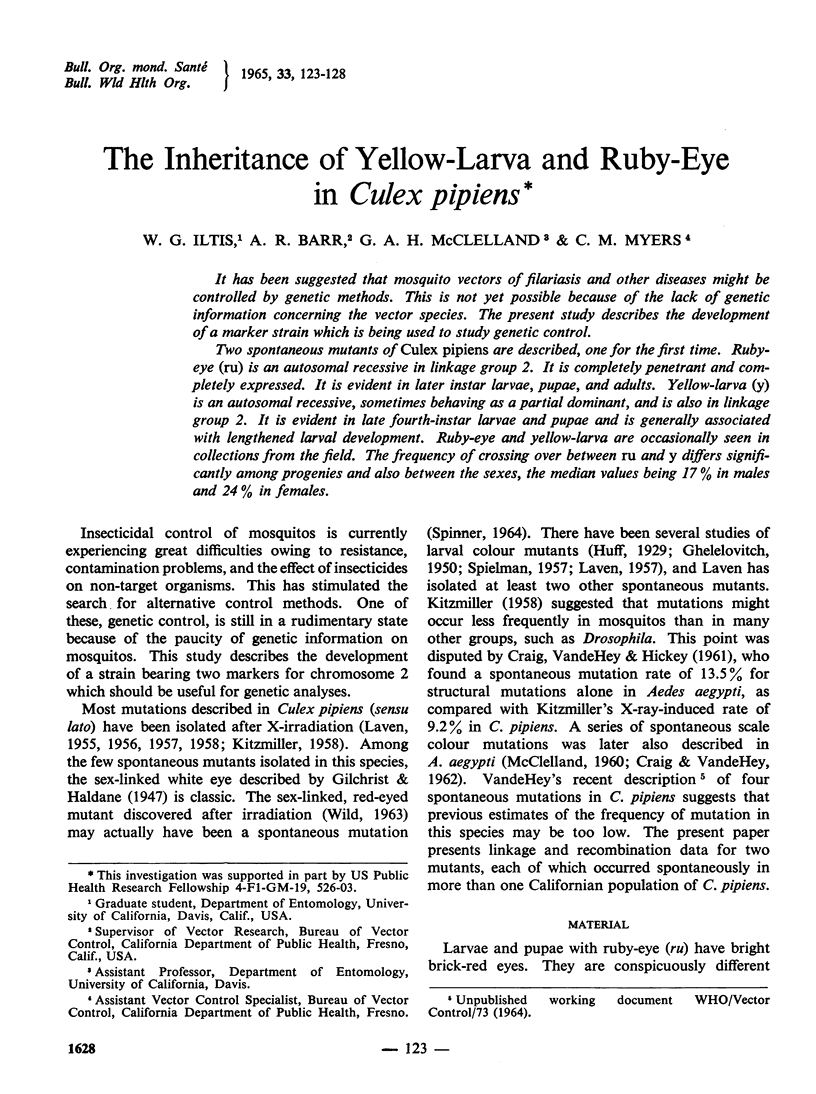
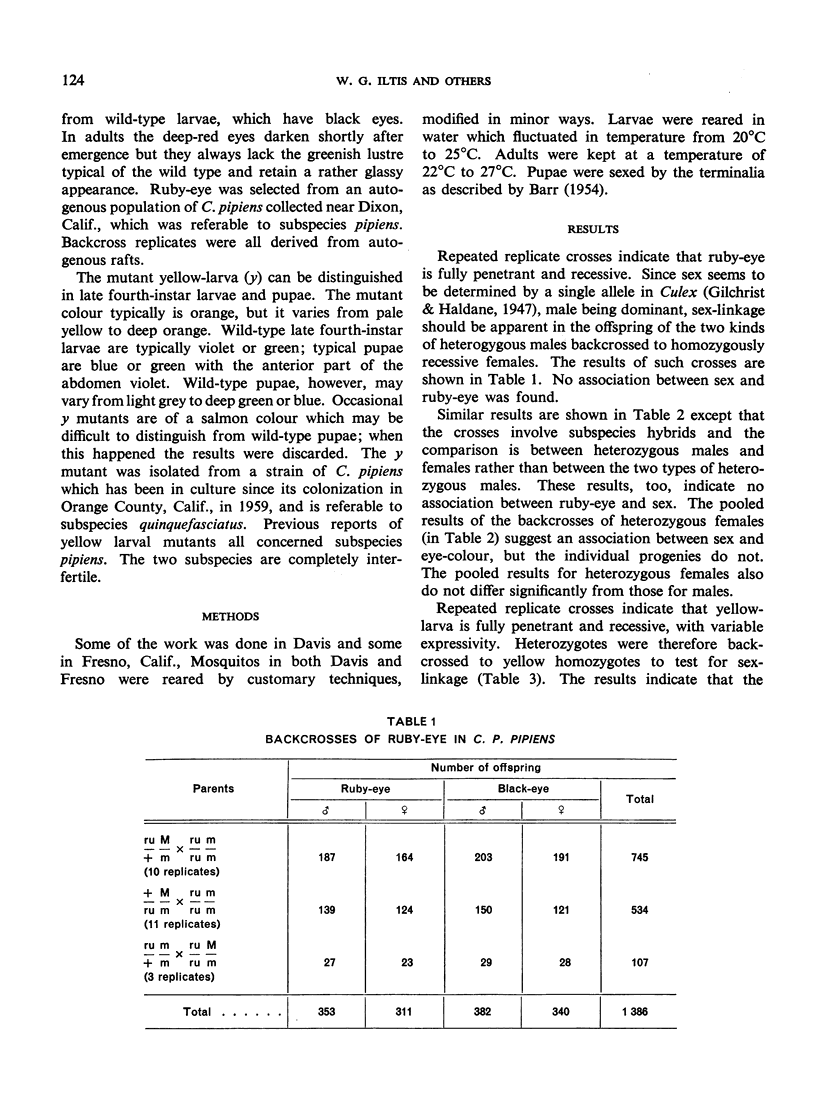
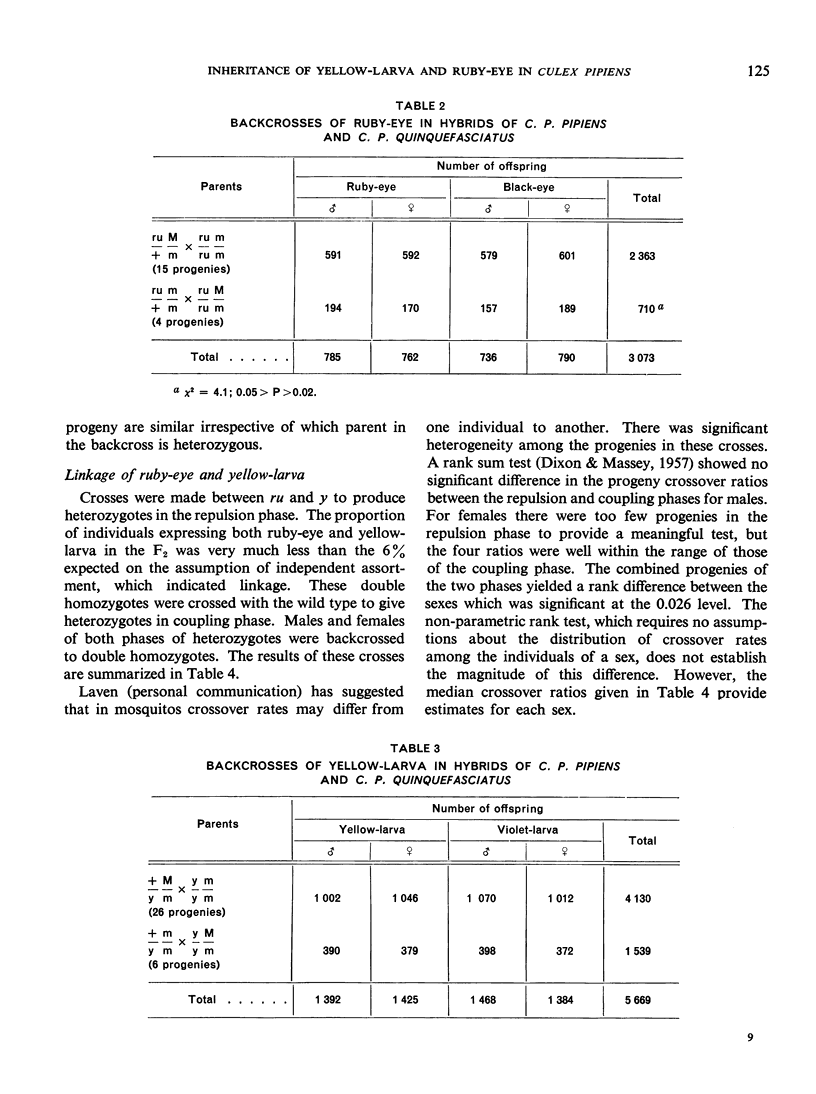
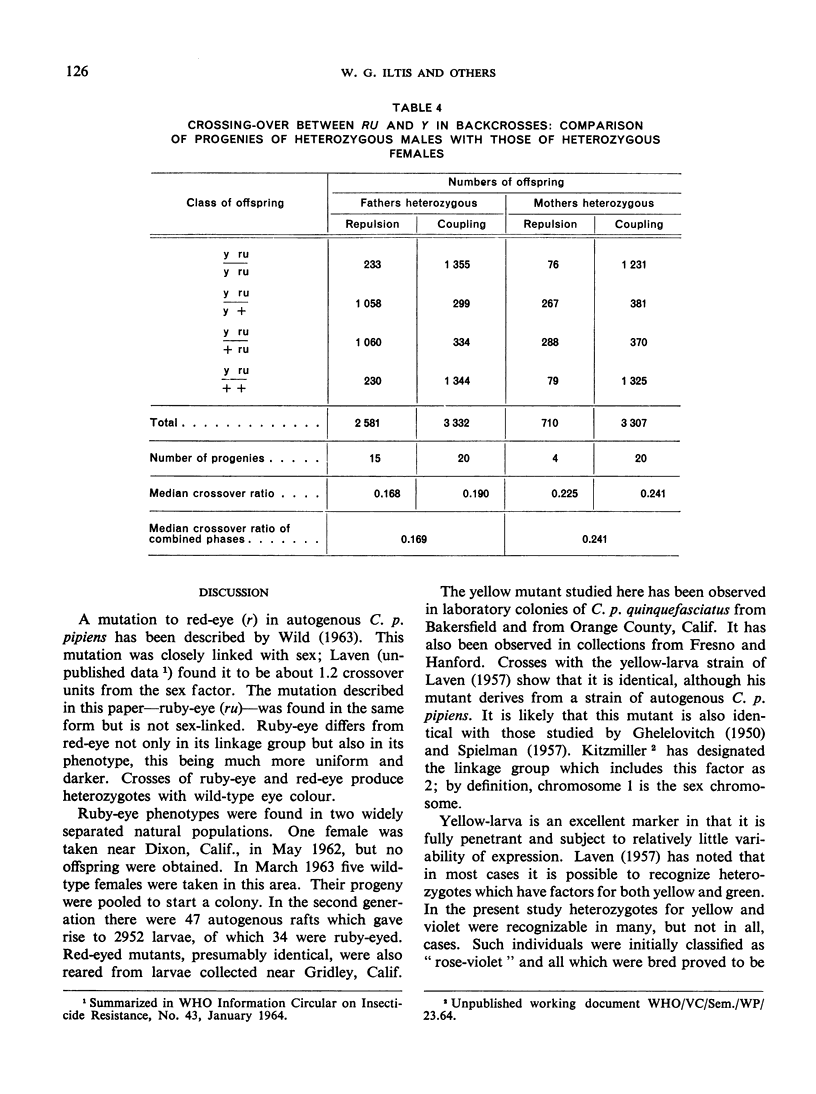
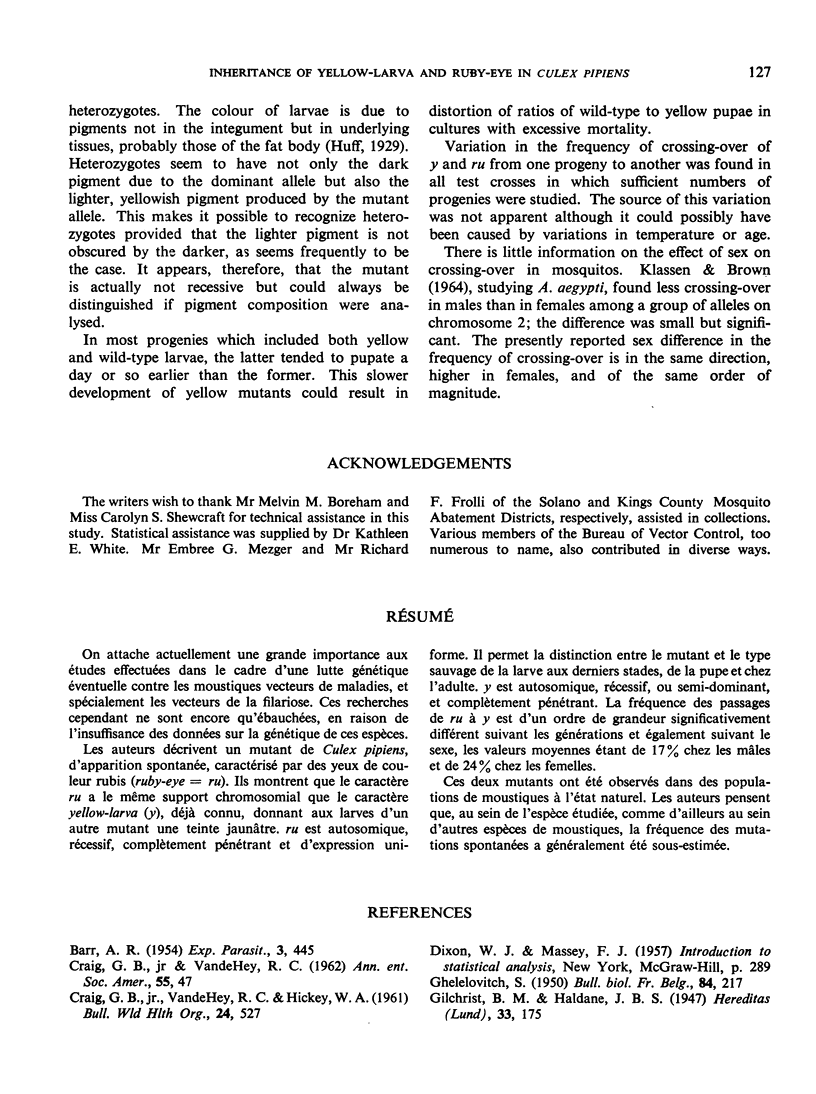
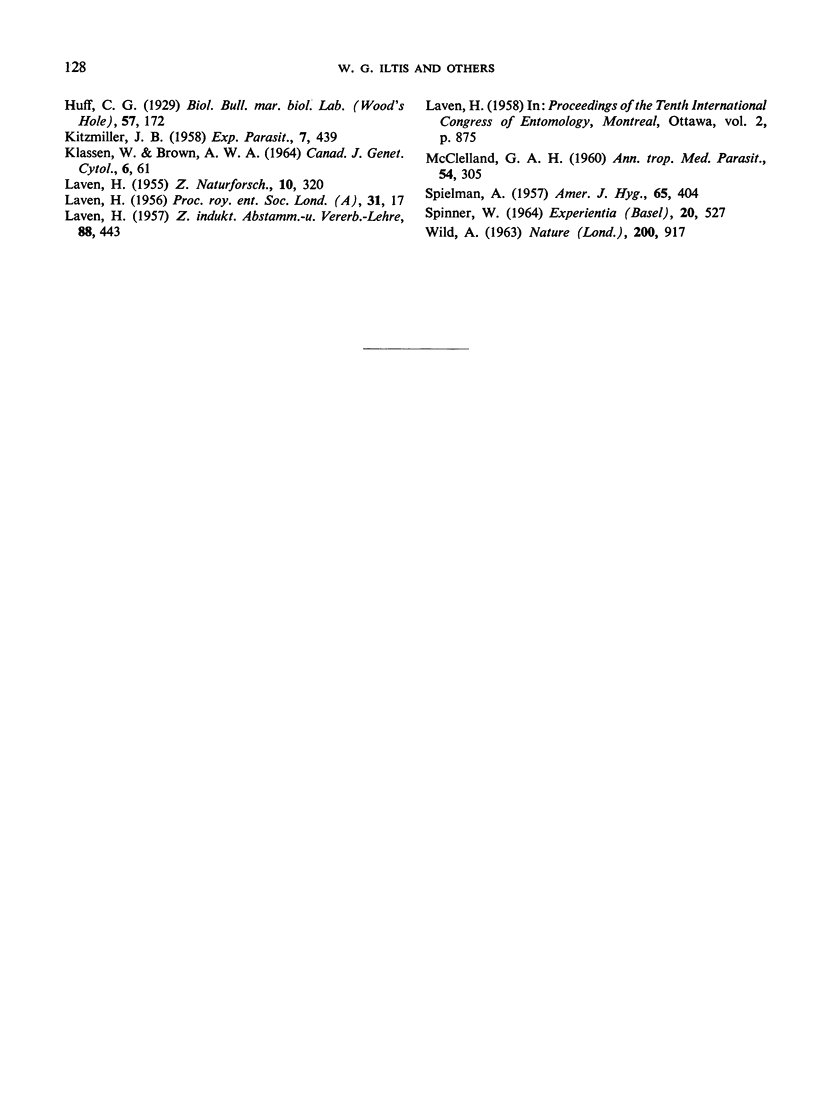
Selected References
These references are in PubMed. This may not be the complete list of references from this article.
- BARR A. R. Hybridization experiments with some American dark-winged anophelines. Exp Parasitol. 1954 Sep;3(5):445–457. doi: 10.1016/0014-4894(54)90040-5. [DOI] [PubMed] [Google Scholar]
- CRAIG G. B., Jr, VANDEHEY R. C., HICKEY W. A. Genetic variability in populations of Aedes aegypti. Bull World Health Organ. 1961;24:527–539. [PMC free article] [PubMed] [Google Scholar]
- KITZMILLER J. B. X-ray induced mutation in the mosquito, Culex fatigans. Exp Parasitol. 1958 Jul;7(4):439–462. doi: 10.1016/0014-4894(58)90039-0. [DOI] [PubMed] [Google Scholar]
- KLASSEN W., BROWN A. W. GENETICS OF INSECTICIDE-RESISTANCE AND SEVERAL VISIBLE MUTANTS IN AEDES AEGYPTI. Can J Genet Cytol. 1964 Mar;6:61–73. doi: 10.1139/g64-009. [DOI] [PubMed] [Google Scholar]
- SPIELMAN A. The inheritance of autogeny in the Culex pipiens complex of mosquitoes. Am J Hyg. 1957 May;65(3):404–425. doi: 10.1093/oxfordjournals.aje.a119878. [DOI] [PubMed] [Google Scholar]
- Spinner W. Rote Augen als Mutante bei Culex pipiens L. Experientia. 1964 Sep 15;20(9):527–528. doi: 10.1007/BF02154096. [DOI] [PubMed] [Google Scholar]
- WILD A. A RED EYE COLOUR MUTATION IN CULEX PIPIENS AFTER X-IRRADIATION. Nature. 1963 Nov 30;200:917–918. doi: 10.1038/200917b0. [DOI] [PubMed] [Google Scholar]


